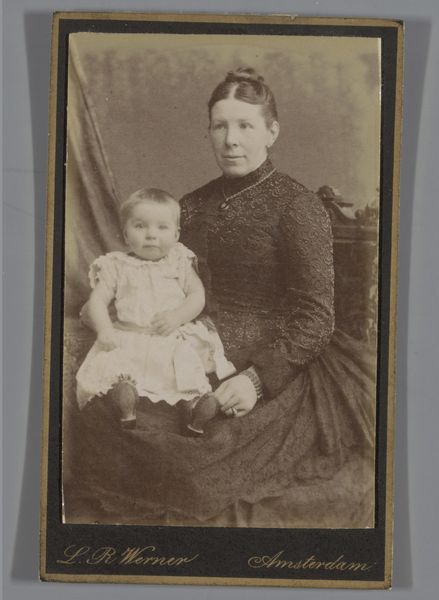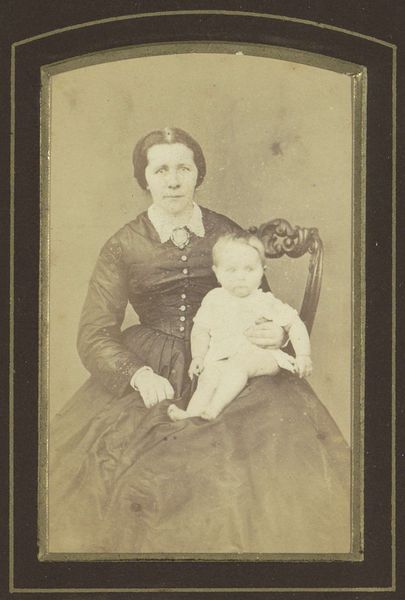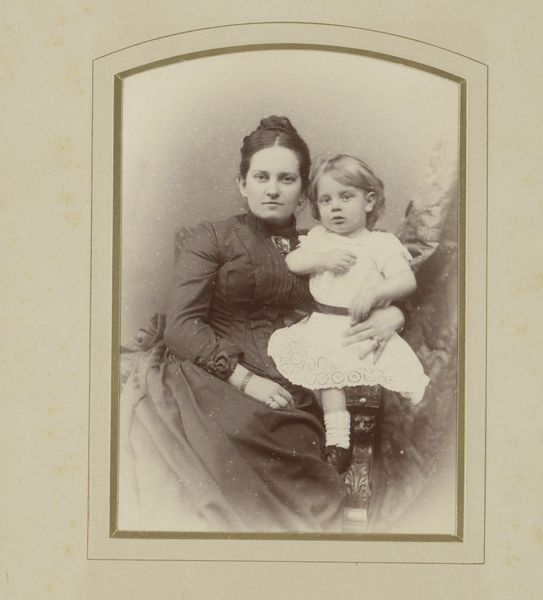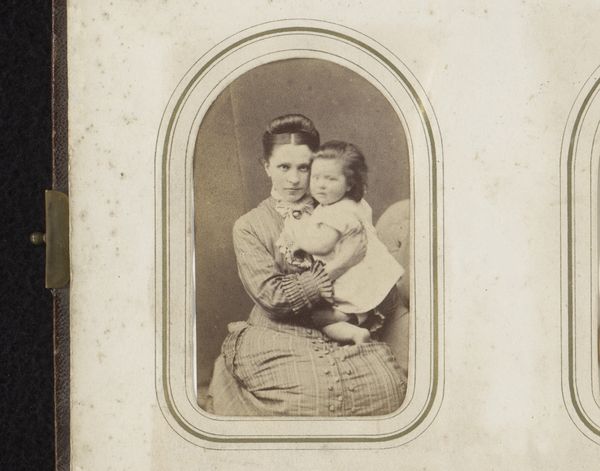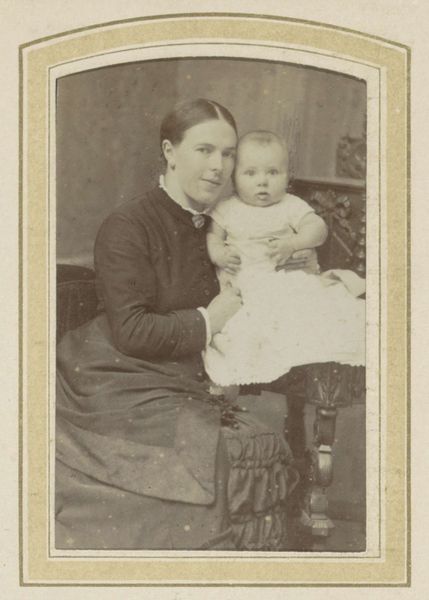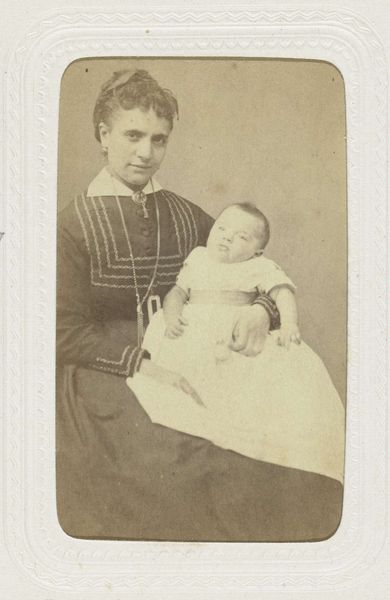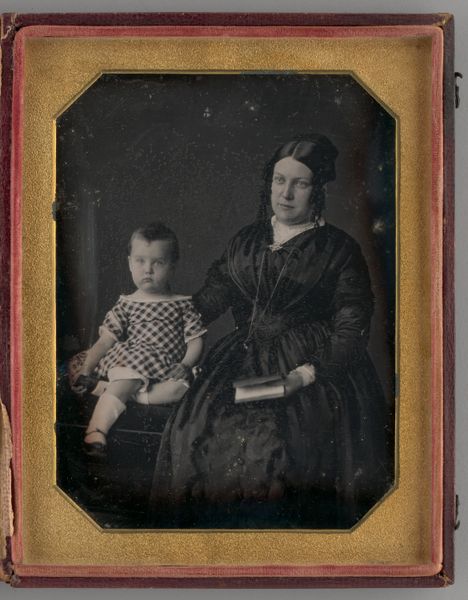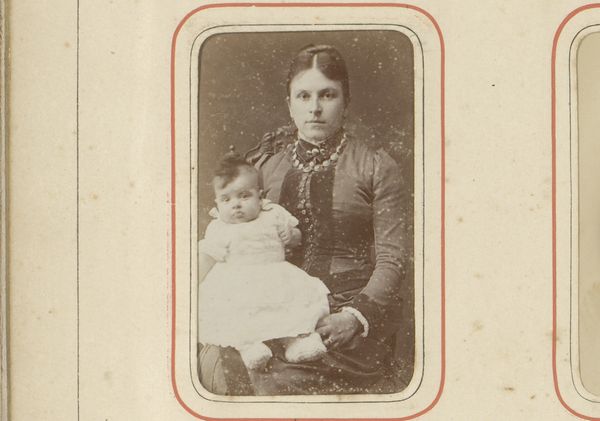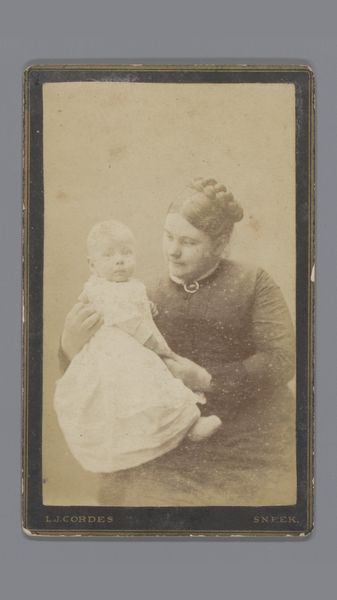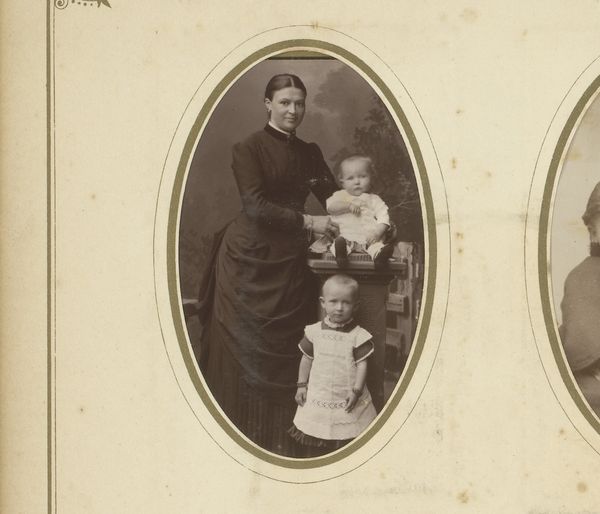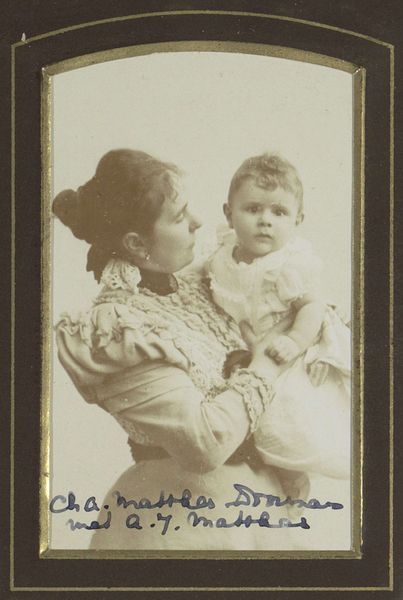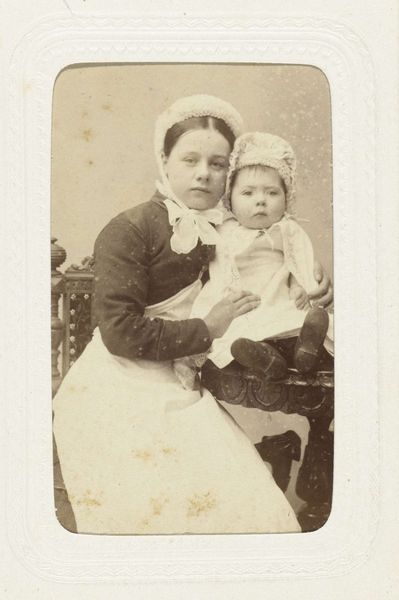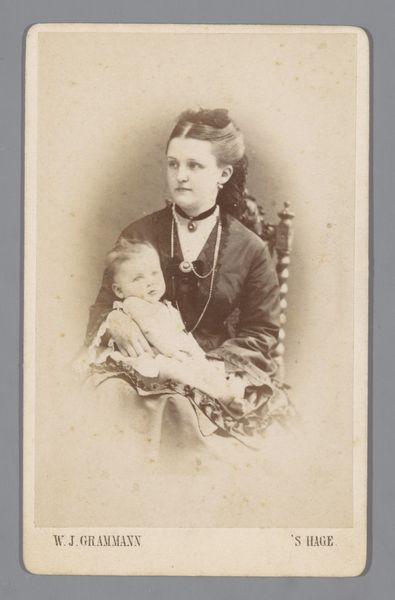
photography, albumen-print
#
portrait
#
16_19th-century
#
self-portrait
#
photography
#
historical photography
#
classicism
#
group-portraits
#
19th century
#
albumen-print
Dimensions: height 98 mm, width 63 mm
Copyright: Rijks Museum: Open Domain
Curator: This albumen print, titled "Portret van een vrouw met een jongen", is attributed to Maurits Verveer and dates from approximately 1864 to 1890. The work resides here at the Rijksmuseum. What's your immediate take? Editor: Well, there's a stillness about it that's almost unsettling. The tight framing, the somber expressions...it's as if they're holding their breath for the camera, and by extension, for us, across all this time. Makes you wonder what thoughts are trapped behind their eyes. Curator: The formal composition adheres to established portraiture conventions of the era. Note the oval frame, the subjects positioned symmetrically within it. The woman's gaze is direct, assertive; the boy's slightly averted, suggestive of youthful unease or perhaps deference. Editor: The sepia tones lend it an antique charm, of course, but also intensify that feeling of distance. I imagine this was someone's treasured possession once, kept in a family album. Now we’re dissecting their visages for composition and semiotic clues, poor souls. Curator: The albumen print process lends a particular luminosity to the image. Notice how the light catches the details of the woman's dress, the delicate lace at her collar, the sheen on the boy's neatly combed hair. These material details ground the work in its specific historical moment. Editor: The boy's outfit looks so stiff, doesn’t it? You can almost feel the weight of social expectations on his young shoulders, literally buttoned-up and constrained. It’s interesting, how even in something as seemingly straightforward as a portrait, you get glimpses into entire social structures. Curator: Precisely. And through careful observation of details—the subjects’ attire, the background setting, the very materiality of the photographic print—we can reconstruct a narrative of nineteenth-century Dutch society, its values, and its representational strategies. Editor: It's almost voyeuristic, this act of scrutinizing a moment frozen in time. But maybe that's the magic of art – it invites us to play detective with history, piecing together fragments to imagine a fuller picture, even if we'll never truly know their stories.
Comments
No comments
Be the first to comment and join the conversation on the ultimate creative platform.
